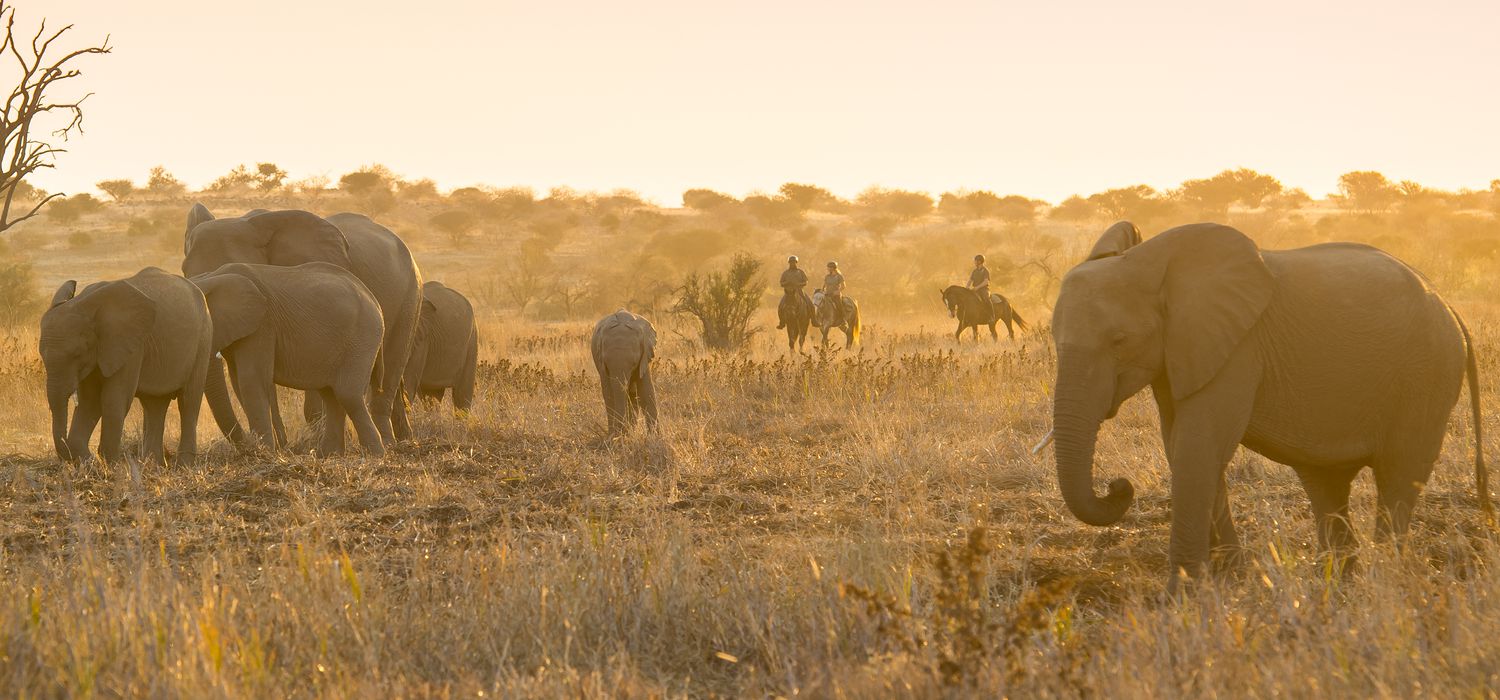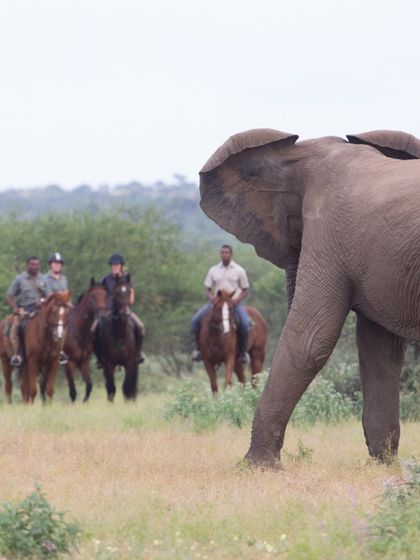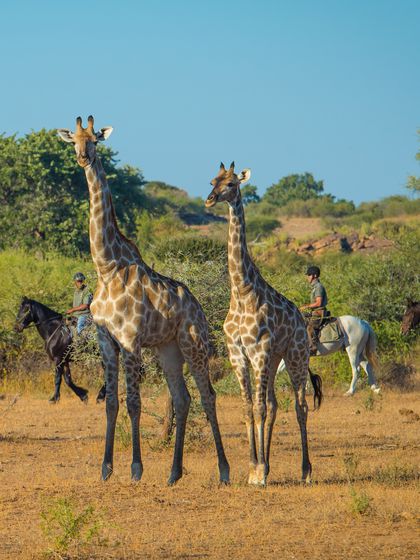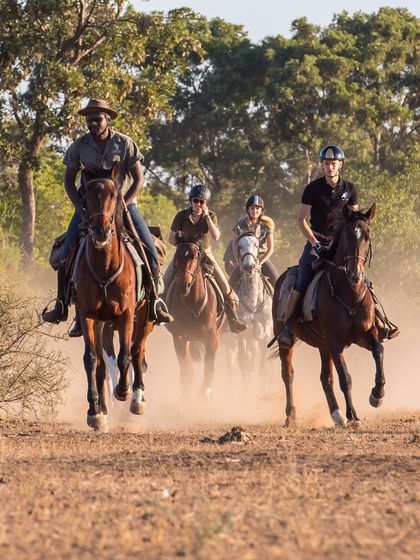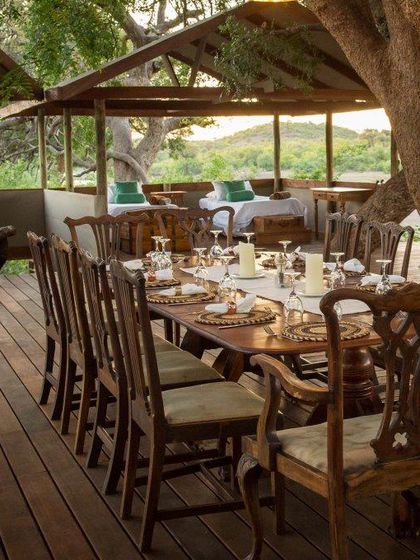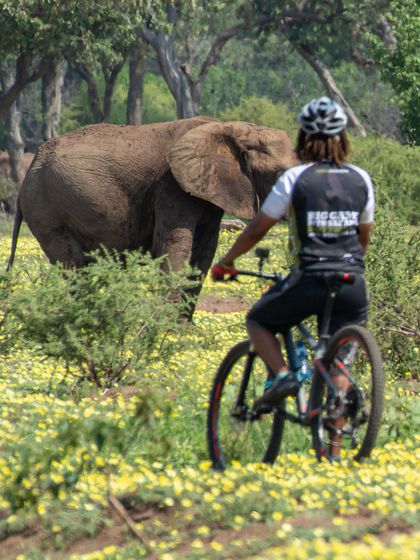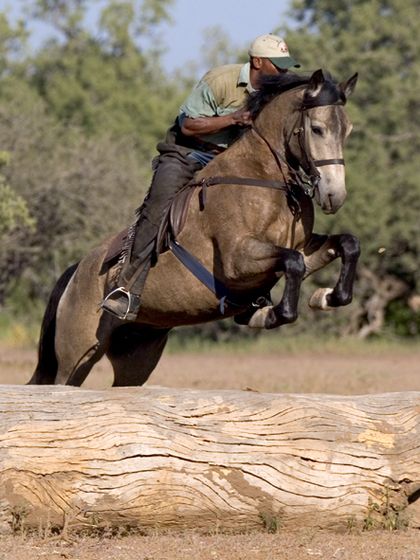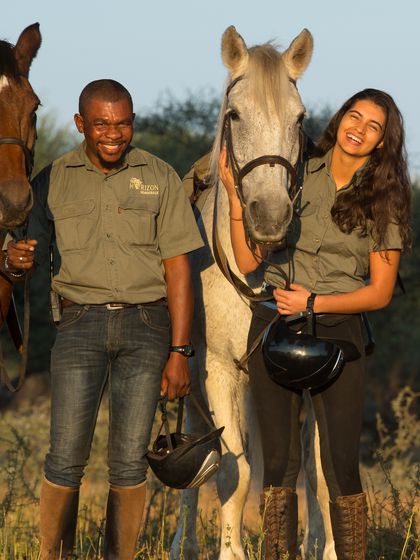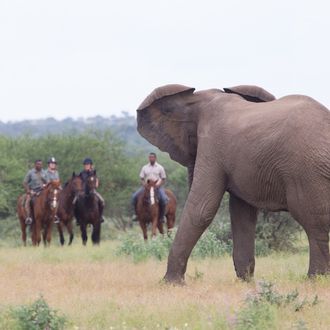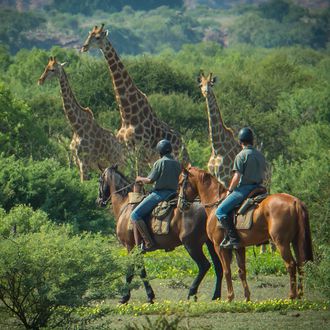Description
Horizon Botswana offers exciting safaris on the Mashatu Game Reserve which is located in the Northern Tuli Game Reserve - the eastern tip of Botswana. Mashatu covers 30,000 hectares and is home to great herds of elephant, estimated to be at least 800 strong. This destination is partly owned by Shane and Laura who also run Horizon Horseback in South Africa. Your main hosts in Botswana are Lindy (stable manager) and Carmen (camp manager), both of whom come with a wealth of experience.
This area is home to numerous cat species including leopard, lion, cheetah, African wild cat and cerval and the Tuli Block is known as 'The Land of the Giants' for good reason - the magnificent Baobab trees, huge sandstone outcrops, magnificent plains and of course, the Mashatu trees, are all prevalent along the great Limpopo River. The area is perfect for riding, offering good going with natural ditches and logs to jump, adding that extra dimension to an already exhilarating ride. Guests can expect regular game sightings, not only of the elephants and cats but also of antelopes, jackals, bat eared foxes and giraffe. The occasional canter across the plains with zebras and wildebeest will leave you with memories of an unforgettable riding holiday.
The horses used for these safaris have been individually selected for their temperament and ride-ability. Many have been chosen from the various South African breeds which are known to be of a tough nature and able to cope under extreme conditions. Some of the breeds used include the Boeperd, Shire x Thoroughbreds and South African Warmbloods. Arab and Friesian crosses are also becoming popular. Your hosts pride themselves on providing horses which have been selected using the same stringent criteria as those used to choose horses for eventing and other competitive disciplines. Their schooling concentrates on classical English style, although neck reining is used when in the bush. The horses are schooled to a high level and respond easily and lightly to the aids. South African Mclellan saddles which have been specially designed for long hours in the saddle are used for the comfort of both horse and rider.
Whether you choose their signature 'Tuli Safari' or the famous 'African Explorer' safari which combines this destination with Horizon in South Africa (see our Horizon African Explorer page for more details), you can rest assured that this will be one of the best horseback experiences of your life.
Holly, Cathy, Danni and Natalie from Far and Ride have all been lucky enough to ride here and will be happy to answer any questions you may have.
